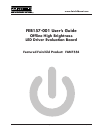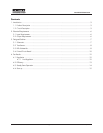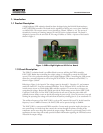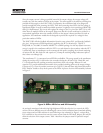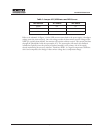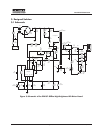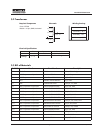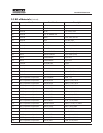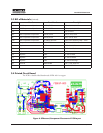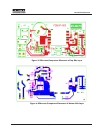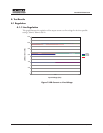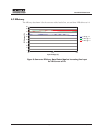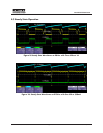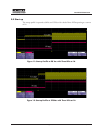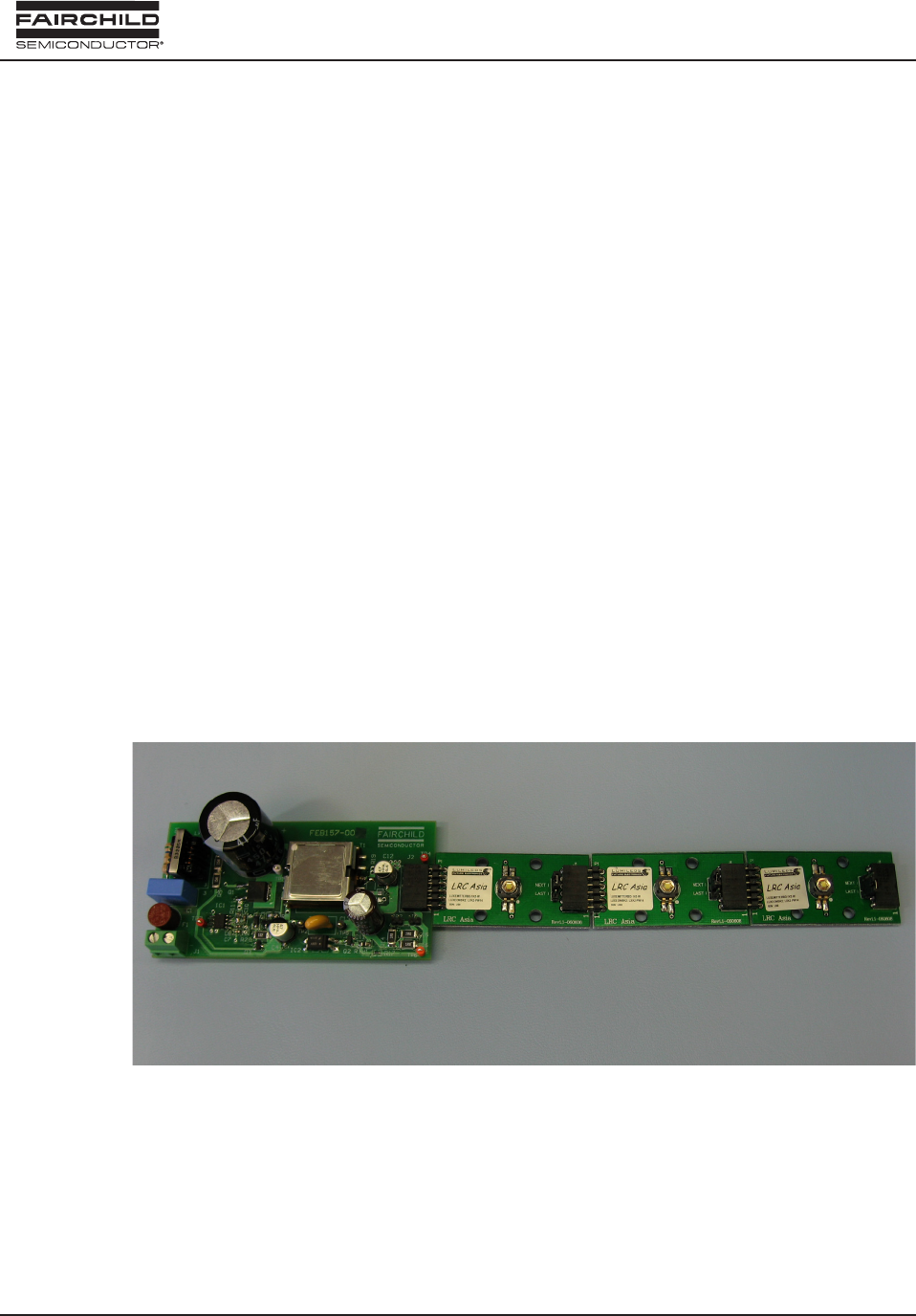
© 2007 Fairchild Semiconductor Page 4 of 17 Rev 1.1 April 2007
www.fairchildsemi.com
Since the output current is being controlled instead of the output voltage, the output voltage will
actually vary with the number of LEDs on the output. The same applies to the auxiliary winding that
provides the bias supply to the FAN7554D. Consequently, the transformer had to be designed to
provide enough bias when powering one LED. Then when powering three LEDs, the bias voltage is
significantly higher. In order to maintain reliable operation, a regulator circuit consisting of R20, ZD1
and Q3 is implemented. This circuit will regulate the voltage to the Vcc pin of the FAN7554 to 18V
when there are multiple LEDs on the output. Please note that this circuit would not be needed in a
conventional application where the number of LEDs on the output is known and fixed. In such an
application, the transformer would then be designed to provide the required Vcc voltage for that
particular number of LEDs.
The FAN7554D will take feedback information from the sense resistor, R12, and from the feedback
pin, pin 1, and generate a PWM signal that is applied to the FET at location Q1. This FET,
FDQ2N80, is a 2A, 800V, N-channel MOSFET in a DPAK package. As with any flyback converter,
energy is stored in the transformer while the FET is on, and released to the secondary when the FET
is turned off. Since no transformer can be constructed with perfect coupling, the network consisting
of resistors R2, R3, R4, diode D1 and capacitor C3 clamp the resulting leakage inductance spike so
that it does not endanger Q1.
The transformer, T1, is constructed on an EFD20 core/bobbin. The energy stored in the transformer
during the on time of Q1 is delivered to the secondary during the off time of Q1. Diode D4, and
C11 rectify and filter the resulting secondary waveform to form a dc voltage. Inductor L1 and
capacitor C12 provide additional attenuation of any residual switching spikes on the output voltage.
Connector J2 is a Tyco six position connector (p/n 535676-5) that will mate with Future Electronics
LED “Emitter” boards to carry the dc power to the LEDs. A picture of a three LED assembly is shown
in Figure 2.
Figure 2: Offline LED Driver and LED Assembly
As previously mentioned, when driving high brightness LEDs the objective is to control the LED
current. There are different ways of controlling the current. In this evaluation board a method utilizing
sense resistors and an NPN transistor is used. Referring to the schematic in Figure 3, resistors R14,
R15, and R16 are the resistors that sense the return current from the LED load. Jumpers JP1 and JP2
allow the selection of the output current. Table 1 describes the jumper status for particular output
currents.



